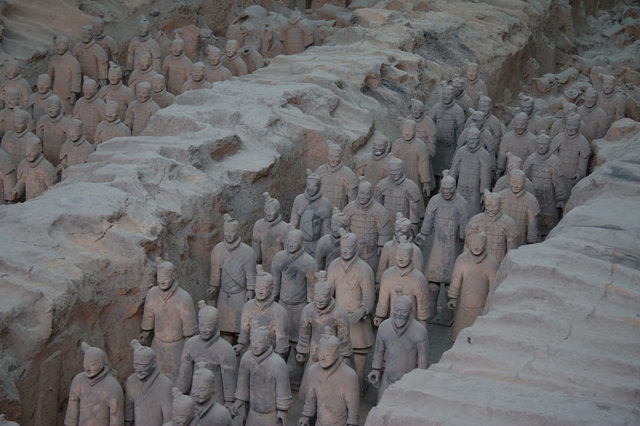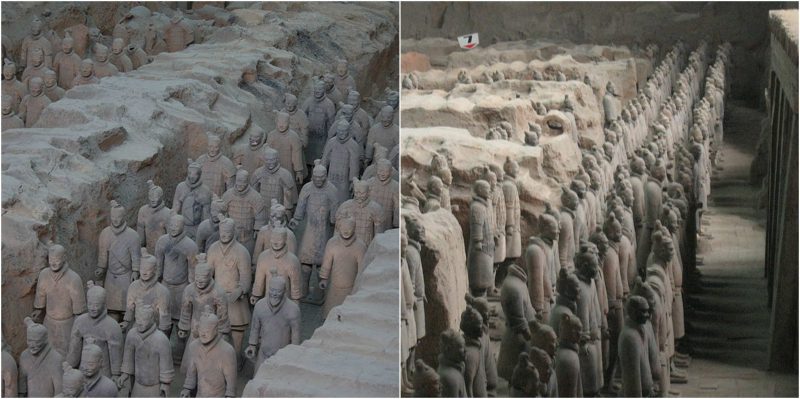In 1974, farmers in the Lintong District of Xi’an were attempting to dig a well when they unearthed an underground chamber. After the authorities had been contacted, a team of archaeologists was sent out to excavate the site. What they found amazed the entire world.

The site was just a mile away from the burial mausoleum of China’s first emperor, Emperor Qin Shi Huang, founder of the Qin Dynasty (221-206 BCE). The Emperor, who died in 210 BCE at the age of 50, is credited with the unification of China through military might and political intrigue. The Chinese prospered under Qin’s rule with the building of roads and canals. This required a uniform measurement system which was created by the Emperor. He also gave the Chinese people a written language and currency system and introduced a legal system. Qin had forts built to guard against invaders from the North, which eventually became links in the Great Wall.
Unfortunately, the Emperor’s belief in alchemy and magic in his quest for immortality caused controversy affecting the last few years of his life, in a country that followed the teachings of Confucius. There were constant threats of assassination, forcing Qin to retreat into his palace and shun society, causing him to lose touch with the common man.
After his death, the country lacked strong leadership, and the Qin Dynasty came to an end along with the unification of China.
Unknown to anyone, when the Emperor was buried he took his entire army with him.

The 1974 excavations revealed four pits with a depth of 23 feet and large enough to hold over 6,000 members of the Emperor’s army. The army was created to follow and protect him in death. The archaeologists uncovered an entire army carved in terra cotta. The details of the six-foot statues are so intricately carved that one can see the treads of the shoes. Researchers have scanned some of the soldiers and have determined that each one has different facial features and ears. As in a human population, each set of ears is unique, very much like a fingerprint. It has been suggested that each statue was fashioned after a real soldier. The entire army was facing the north; ready to protect the Emperor from the invaders he feared in life.
Not only were warriors found, but replicas of horses, wagons, and even real weapons were all discovered, ready to assist the Emperor should he need them. Archaeologists were pleased that the weapons had not deteriorated from rust and were in surprisingly good shape.
Although the tomb was looted a few years after the Emperor’s death and many of the statues damaged, the worst damage has come from mold, humidity, and general exposure since the original discovery.
After a hiatus on the digging in 2008 to study more efficient ways of excavation and preservation, archaeologists have begun to excavate the second pit. From what they have found so far, they believe that this chamber holds the archers, the cavalry, possibly the army’s chariots, and even more horses. The specimens that have been discovered seem to be in better condition than what was found in the original pit – some still had traces of the original bright paint. Yuan Zhongyi, a senior archaeologist, revealed that the pit contained “the essence of the terra cotta warriors” owing to the different types of figures found.
He also stated, “You can find all the kneeling archers, soldiers, and cavalry in the number two pit. Their colorful paint is also relatively well preserved.”
The third pit has yet to be excavated but is believed to hold taller figures representing officers. The fourth pit is thought to be empty.
